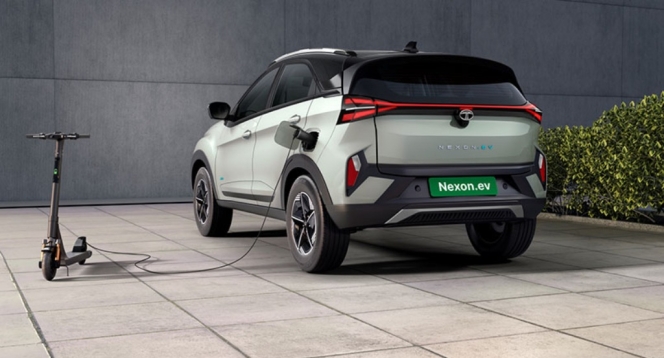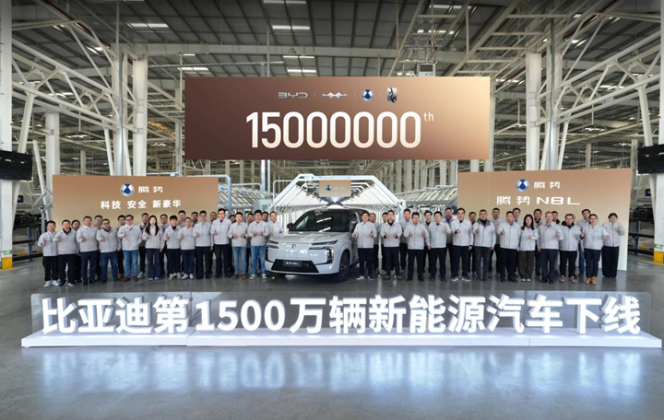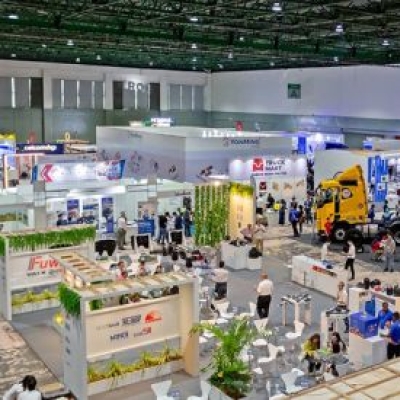
Taral Agarwal is helping his father run their ‘chikki’ business at Lonavala besides studying to achieve a BBA degree. Coming from a family that has been into the traditional Indian sweets business for three generations now, Agarwal firmly belongs to Gen Z and has the confidence as well as the exposure to match. His thoughts about how he wants to see their family enterprise grow sustainably and offer hygienic products is interesting, He does not seem to be bothered about how fast a ‘chikki’ brand in his city has grown and branched out.
What is surprising about the lad who rides to college and runs errands for his family on a fossil fuel powered two-wheeler, is his thoughts about shifting to an electric vehicle to cut down operating costs. Agarwal is clearly not convinced. He is not convinced about the claim of EVs being ‘green’! What is the point in buying an EV when the fuel or electricity it is going to be powered with, is going to come from burning lignite? he asks.
Agarwal is not alone among the Gen-Zers. Credit should be given to them for their exposure to the world events and how they think of or are sensitive to the developments taking place around them. They perhaps are more sorted with the idea of environment and sustainability. Paying more for the initial acquisition cost of an EV is a concern to Agarwal, but a bigger concern is whether what is claimed by EVs manufacturers in terms of range and carbon neutrality is true or not.
The falling prices of batteries or the alternatives to rare earth metals has the attention of Gen-Zers like Agarwal, but a larger and complete picture is what he and other like him want to see. Aware of the fact that their country would benefit from less dependence on fossil fuel, the Gen-Zers seem to want products that truly measure up to their claims. They, it looks like, are keen to see with their eyes, real sustainability plans over claims. They are looking for more than the ESG performance may indicate, though that is one parameter that is assuming importance.
Events like floods, bush fires and the accelerated melting of glaciers are not beyond the purview of the Gen-Zers. They are in fact making them aware of where the directions of the efforts should be. But they are not the one that will believe in claims. They are therefore keeping a close eye on how the future mobility scene is shaping up in terms of carbon neutrality and sustainability. Something that the tall compounds walls of manufacturing plants and glass facades of various corporate offices of automotive manufacturers may not be able to conceal for long.
Even governments are not beyond the watchful eye of the Gen-Zers. It is important therefore that it will take much more for them to simply announce regulations and change rules pertaining to mobility. It would not take long to understand for the Gen-Zers if the governments are truly interested in addressing their concerns and needs or simply chalking out short and mid-terms measures.
The Gen-Zers are at a juncture where they are seriously thinking if fossil fuel vehicle pollute more over their lifetime or the EVs do. They are rather concerned about the ‘cost-to-the-environment’ and recyclability than the claims of zero-pollution.
Future interest in EV adoption fell most among Gen Z age category (74 percent in 2021 vs 56 percent in 2022), read the intro of an article in theevreport.com dated 1 August 2022. An article dated 8 May 2023 in USA Today mentioned that electrifying the car market may be getting more difficult with the share of Americans who say they’re ‘very unlikely’ to consider an EV for their next vehicle purchase. Citing a report by consumer analytics firm JD Power, the article stated that persistent worries about charging infrastructure and vehicle pricing was dampening enthusiasm for EVs among other reasons like the lack of public charging infrastructure, geography and education.
The rising status of India as the world’s biggest micro-electro mobility market would do good to align with the expectations of the Gen Z. Not just in terms of performance, durability or range, but also in terms of how ‘green’ the entire concept truly is. It is only when they are convinced, would they want to invest. Mere ESG figures may not even satiate their appetite in terms of their future mobility needs.
The question that comes to mind therefore is, are hydrogen vehicles really the future? Are governments the world over simply rushing to phase out fossil fuel vehicles? Are government truly aware of the ‘cost-to-the-environment’ about EVs vis-à-vis fossil fuel vehicles or they simply interested in reducing their dependence on imported fuels? What are their plans about producing electricity through greener means to support the kind of EVs envisaged? What about the other infrastructure needs? What about taxation and subsidies?
Typical answers and corporate keywords may not work in this case. For the Gen-Zers to bet their money on EVs, it will take much more. Incidences like EVs catching fire has already put more questions in the mind of Gen-Zers. Convincing them would not be easy.
Chartered Speed Deploys Electric Buses For DCM Shriram Staff Transport
- By MT Bureau
- December 24, 2025

Chartered Speed has deployed 11 electric buses for staff transportation for DCM Shriram at Jhagadia GIDC, Bharuch. The service was inaugurated by Sanyam Gandhi, Whole-time Director at Chartered Speed and Aditya Shriram, Deputy Managing Director at DCM Shriram.
The deployment is part of an effort to shift employee mobility towards electrification. Chartered Speed operates a fleet of over 2,000 buses across six states, serving 350,000 passengers daily.
The electric buses are equipped with several technologies for fleet management and passenger safety. It comes with real-time GPS tracking and onboard Driver Monitoring Systems (DMS). CCTV cameras, fire protection systems and first-aid kits are installed in every vehicle.
The company currently provides school and staff transportation services to various clients, including GHCL Limited and Apple Global School.
Sanyam Gandhi, Whole-time Director, Chartered Speed, said, “With the recent deployment of electric buses, we are strengthening our commitment to reducing the carbon footprint of our operations and supporting the transition to greener transportation solutions. Our vision is of building a large, clean energy-powered fleet that aligns with global trends towards electrification in public transport. We remain focused on integrating technology in our services not only enhances operational efficiency but also fosters a culture of safety that we believe is essential for the future of transportation.”
- Tata Motors
- TATA.ev
- Nexon.ev
- Tiago.ev
- Curvv.ev
- Harrier.ev
- XPRES-T EV
- Shailesh Chandra
- Sierra.ev
- Punch.ev
- Avinya
- Agratas
Tata Motors Surpasses 250,000 EV Sales In India
- By MT Bureau
- December 23, 2025

Tata Motors, one of the leading passenger vehicle manufacturers in the country, has attained a new milestone in the Indian electric vehicle (EV) market, with cumulative sales of its TATA.ev range exceeding 250,000 units.
Since the launch of the Nexon.ev in 2020, the company has secured a 66 percent market share of all electric passenger vehicles sold in India to date. The Nexon.ev has become the first electric model in the country to surpass 100,000 cumulative sales.
At present, the company’s green vehicle offering includes the Tiago.ev, Punch.ev, Nexon.ev, Curvv.ev and Harrier.ev for personal use, alongside the XPRES-T EV for fleet operations.
To support its EV customers, Tata Motors has established an ecosystem, which includes access to over 200,000 charging points, including home, community and public chargers. A digital platform providing coverage for over 20,000 public chargers. Around 100 mega charging hubs operational across key corridors, offering speeds of more than 120kW. Approximately 1,500 dedicated EV service bays nationwide, staffed by over 5,000 technicians.
The automaker stated that every TATA.ev vehicle is manufactured with more than 50 percent local content. In collaboration with other Tata Group companies, the firm has localised the production of battery packs and battery management systems. The supply chain also includes domestic production of power electronics, wiring harnesses and thermal management systems.
Going forward, Tata Motors has outlined a robust growth strategy through to 2030:
- Upcoming Launches: The Sierra.ev and a new Punch.ev are scheduled for release in CY26, followed by the Avinya luxury range at the end of 2026.
- Portfolio Growth: Five new nameplates are planned by FY2030.
- Infrastructure Targets: The company aims for 400,000 charge points by CY2027 and 1 million by 2030.
- Battery Sourcing: Future models will use battery cells produced at the Agratas gigafactory in Sanand.
Shailesh Chandra, MD & CEO, Tata Motors Passenger Vehicles, said, “Crossing 250,000 EV sales reflects how electric mobility is fast becoming part of everyday Indian life. Our customers are driving more, travelling farther, and increasingly trusting EVs as their only cars. Our EV journey which began in 2018, was never about leading alone but about building the ecosystem to enable India’s transition to clean mobility. This progress is the outcome of the government’s forward-thinking policies, the steadfast support of our supplier partners and charging infrastructure providers and above all, the trust and enthusiasm of TATA.ev customers. As EV adoption accelerates, our commitment remains clear: to mainstream electric mobility by making it accessible across segments, strengthening the ecosystem, and investing in India-first technology and localization. This is how we will continue to lead India’s growing EV market.”
The company also intends to focus on the circular economy by reusing batteries for energy storage and providing battery health checks for second-hand owners.
Forsee Power To Supply ZEN LFP Battery Systems To Mexico's MegaFlux
- By MT Bureau
- December 22, 2025

French-headquartered battery systems manufacturer Forsee Power has announced that MegaFlux, a Mexico-based powertrain integrator, has selected its ZEN LFP battery system for its heavy vehicle electric powertrains.
MegaFlux develops electric powertrains for trucks and buses, including retrofit solutions that convert diesel vehicles to electric. The company also provides charging infrastructure and energy management services.
The ZEN LFP product line uses lithium-ion LFP chemistry and is designed for buses, trucks and off-highway vehicles. The batteries are available in 36 kWh and 55 kWh formats, allowing for various voltage and energy combinations. The LFP battery has an energy density of 240 Wh/L. Being a modular system, upto to two modules can be stacked to optimise vehicle space. The battery has 6,000 charging lifecycle and is ISO 26262 ASIL-C and industry standards including R100-3 and R10.6 certified.
The use of LFP (Lithium Iron Phosphate) chemistry is intended to provide a lower Total Cost of Ownership (TCO) for operators due to its thermal stability and cycle life, factors that are relevant to the operating conditions in markets such as Mexico.
MegaFlux will integrate the ZEN LFP batteries into powertrains sold to original equipment manufacturers (OEMs) and into its vehicle conversion projects.
BYD Rolls Out 15 Millionth New Energy Vehicle As Global EV Sales Rise
- By MT Bureau
- December 19, 2025

Chinese automotive major BYD has celebrated the production of its 15 millionth new energy vehicle (NEV) at its Jinan Factory. The milestone vehicle is a Denza N8L, which also represents the 15,000th unit of this six-seat SUV model.
The company reported sales of 4.182 million units from January to November 2025, a YoY growth of 11.3 percent. Global markets contributed to this performance, with overseas sales reaching 917,000 units, surpassing the total volume recorded in 2024. BYD now operates in more than 119 countries and regions.
Technological innovation continues to drive the company's operations. In the first three quarters of 2025, R&D expenditure rose to CNY 43.75 billion, a 31 percent increase compared to the previous year. Total cumulative investment in research and development has now exceeded CNY 220 billion.
The Denza brand has entered markets in Singapore, Thailand and Malaysia. During the first half of the year, the Denza D9 became the top-selling luxury MPV in Indonesia, Thailand and Malaysia.
The brand has extended its presence into Europe and Latin America. This expansion is part of a strategy to increase the electrification of the global luxury automotive sector. Denza recently showcased the D9 at the São Paulo International Motor Show to support its growth in the region.






Comments (0)
ADD COMMENT